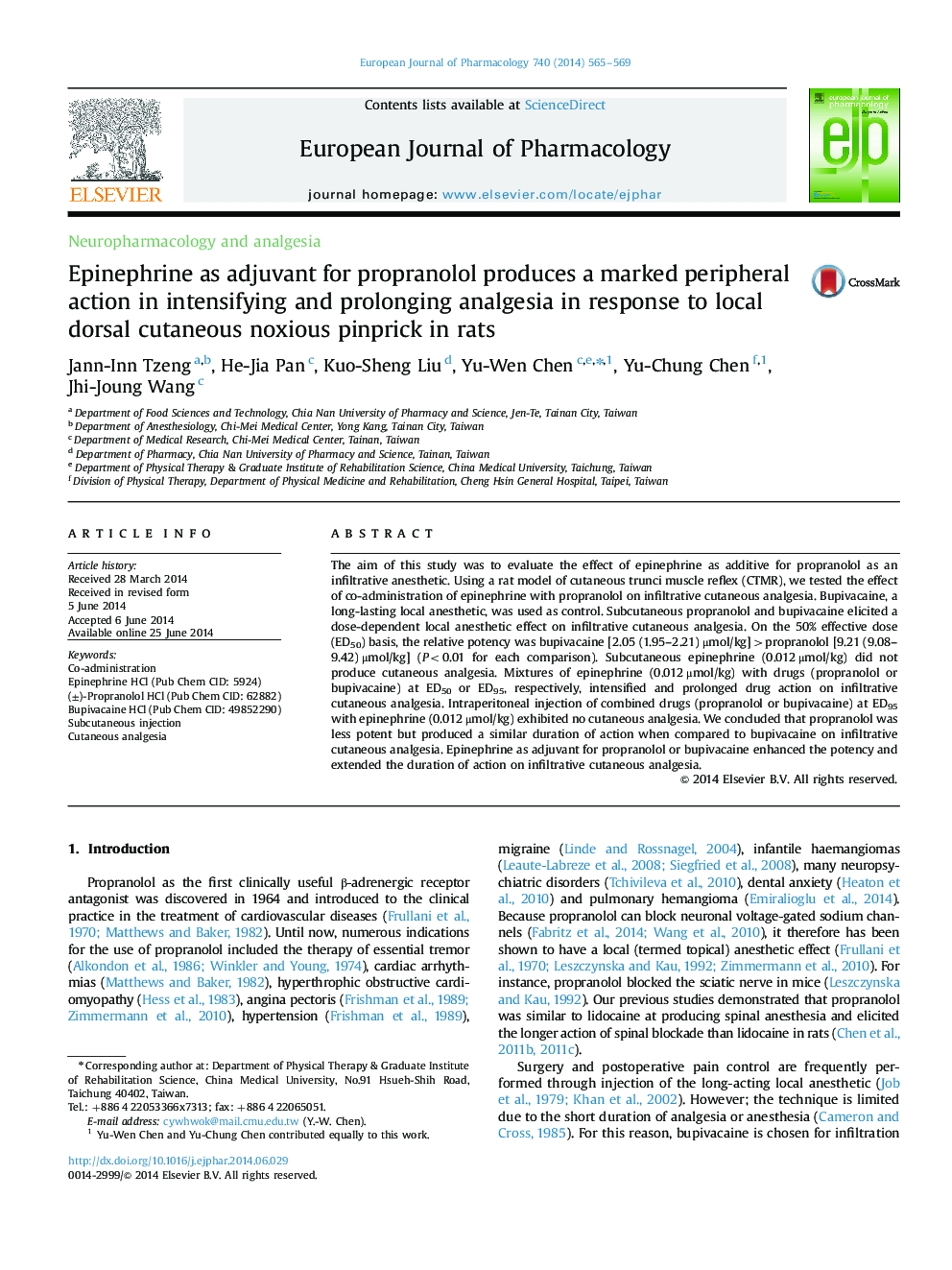| Article ID | Journal | Published Year | Pages | File Type |
|---|---|---|---|---|
| 2531635 | European Journal of Pharmacology | 2014 | 5 Pages |
The aim of this study was to evaluate the effect of epinephrine as additive for propranolol as an infiltrative anesthetic. Using a rat model of cutaneous trunci muscle reflex (CTMR), we tested the effect of co-administration of epinephrine with propranolol on infiltrative cutaneous analgesia. Bupivacaine, a long-lasting local anesthetic, was used as control. Subcutaneous propranolol and bupivacaine elicited a dose-dependent local anesthetic effect on infiltrative cutaneous analgesia. On the 50% effective dose (ED50) basis, the relative potency was bupivacaine [2.05 (1.95–2.21) μmol/kg]>propranolol [9.21 (9.08–9.42) μmol/kg] (P<0.01 for each comparison). Subcutaneous epinephrine (0.012 μmol/kg) did not produce cutaneous analgesia. Mixtures of epinephrine (0.012 μmol/kg) with drugs (propranolol or bupivacaine) at ED50 or ED95, respectively, intensified and prolonged drug action on infiltrative cutaneous analgesia. Intraperitoneal injection of combined drugs (propranolol or bupivacaine) at ED95 with epinephrine (0.012 μmol/kg) exhibited no cutaneous analgesia. We concluded that propranolol was less potent but produced a similar duration of action when compared to bupivacaine on infiltrative cutaneous analgesia. Epinephrine as adjuvant for propranolol or bupivacaine enhanced the potency and extended the duration of action on infiltrative cutaneous analgesia.
